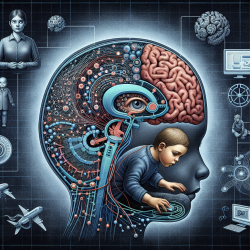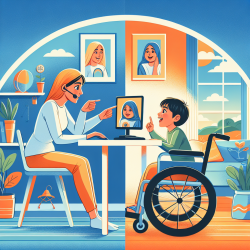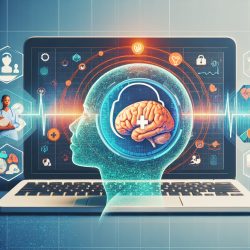Introduction
In the realm of neurodevelopmental disorders, the corpus callosum plays a crucial role. It serves as the bridge facilitating communication between the brain's hemispheres. When there is a disruption in its development, known as agenesis of the corpus callosum (ACC), it can lead to a myriad of neuropsychiatric manifestations. Understanding these manifestations is essential for practitioners, especially those involved in child development and therapy.
Understanding Partial Agenesis of the Corpus Callosum
The corpus callosum is the brain's largest white matter structure, responsible for transmitting neural signals between the left and right hemispheres. Partial agenesis occurs when this structure is only partially formed, which can result in varied psychiatric and developmental challenges. According to the research article "Neuropsychiatric Manifestations of Partial Agenesis of the Corpus Callosum: A Case Report and Literature Review," this condition is linked to cognitive deficits, learning disabilities, and developmental delays.
Research Insights
The case study presented in the research highlights a 45-year-old man with partial agenesis of the corpus callosum, exhibiting symptoms such as depression, memory loss, and behavioral disturbances. These symptoms align with the broader literature, which associates ACC with psychiatric disorders like schizophrenia and bipolar disorder.
For practitioners, this underscores the importance of early detection and intervention. By understanding the potential neuropsychiatric manifestations of ACC, speech-language pathologists and therapists can tailor their approaches to better support affected children.
Practical Implications for Practitioners
Practitioners can leverage the findings from this research to enhance their therapeutic strategies. Here are some actionable insights:
- Early Screening: Implement early screening for developmental delays and psychiatric symptoms in children suspected of having ACC.
- Interdisciplinary Approach: Collaborate with neurologists, psychologists, and educators to create comprehensive care plans.
- Customized Therapy: Develop individualized therapy plans focusing on improving interhemispheric communication and cognitive skills.
- Parental Involvement: Educate and involve parents in the therapeutic process to ensure consistent support at home.
Encouraging Further Research
While the current research provides valuable insights, there is still much to learn about ACC and its implications. Practitioners are encouraged to engage in further research, exploring new therapeutic techniques and interventions. By contributing to the body of knowledge, we can improve outcomes for children with ACC.
To read the original research paper, please follow this link: Neuropsychiatric Manifestations of Partial Agenesis of the Corpus Callosum: A Case Report and Literature Review.










